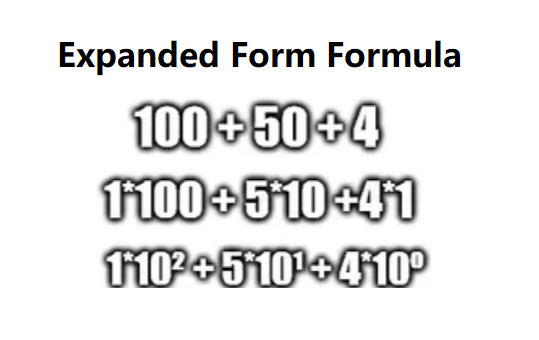 Home
Home
 Back
Back

Definition: This calculator converts a decimal number into its expanded form, breaking it down into the sum of its place values in one of three formats: number form (e.g., \( 100 + 20 + 3 \)), factor form (e.g., \( 1 \times 100 + 2 \times 10 + 3 \times 1 \)), or exponential form (e.g., \( 1 \times 10^2 + 2 \times 10^1 + 3 \times 10^0 \)).
Purpose: It helps users understand the place value representation of numbers, which is useful in mathematics education and for visualizing the structure of numbers.
The calculator breaks down a number into its place values based on the powers of 10:
Steps:
Understanding the expanded form is crucial for:
Example 1 (Number Form): Find the expanded form of 123 in number form:
Example 2 (Exponential Form): Find the expanded form of 45.67 in exponential form:
Q: Can the calculator handle negative numbers?
A: Yes, the calculator handles negative numbers by applying the negative sign to the expanded form (e.g., -123 becomes \( -100 - 20 - 3 \) in number form).
Q: What happens if I enter zero?
A: The expanded form of zero is simply 0, regardless of the format.
Q: What is the difference between the three forms?
A: Number form shows the direct place values (e.g., 100 + 20), factor form shows digits multiplied by place values (e.g., 1 × 100 + 2 × 10), and exponential form uses powers of 10 (e.g., 1 × 10^2 + 2 × 10^1).